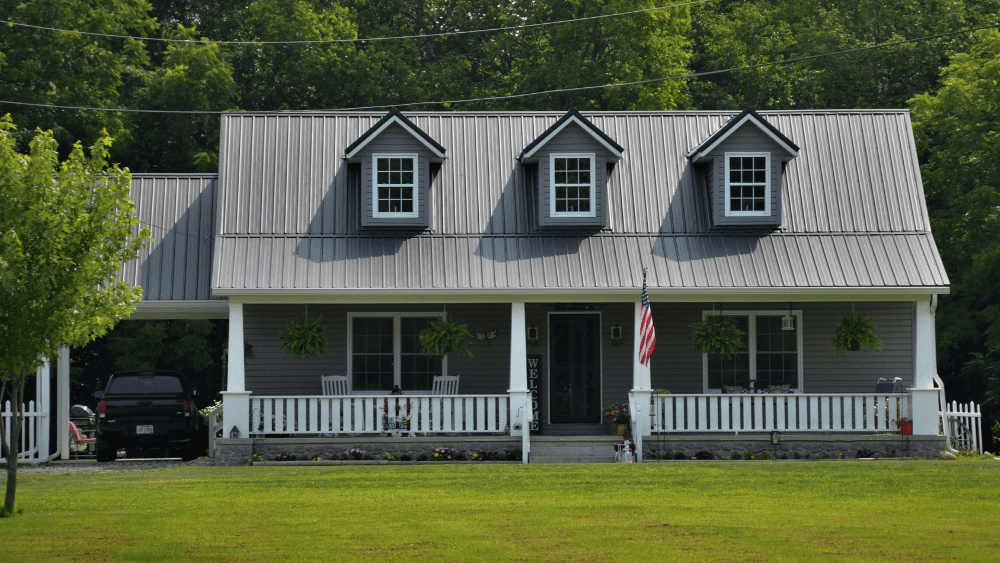
Considering removing your fireplace? You may be surprised to learn that you’re in a growing majority. According to a National Association of Home Builders (NAHB) study, only 16% of buyers listed a fireplace as an essential household item. Further evidence suggests that fireplaces are on the decline. The Environmental Protection Agency counted only 13 million fireplaces in 2016, down from more than 17.5 million fireplaces two years prior. By 2018, builders were installing fireplaces in just 41% of single-family homes compared with 57% in 2001, according to NAHB. Fireplaces are even less popular in new builds at the lower end of the price range, with only 7% of new single-family homes priced under $150,000 in 2018 had fireplaces. For all the details on fireplace removal, we spoke with Russ Dimmitt, Director of Education at the Chimney Safety Institute of America. We’ll break project costs, details, and impact on home value. Full fireplace removal is a complex procedure — and an expensive one. Removal of a brick fireplace and chimney on a load-bearing wall can cost $10,000, depending on the size and material. Removal costs vary, depending on several factors. Demolishing the stack and breast, installing structural supports, and repairing walls, the floor, and the roof typically costs $3,000 to $7,500. A partial removal generally runs $500 to $2,500. It stands to reason that the larger the chimney (or the more stories), the more work is required, and, thus, the higher the price will be. What may not be as obvious is that the bigger the chimney is, the more debris contractors need to haul away. The cost for a dumpster depends on the location and duration of the rental, but the national average cost is around $470. A brick chimney typically costs more to remove than a metal chimney. This is primarily due to the weight of the debris that has to be disposed of. Masonry, brick, and stone fireplaces, which are “site-built,” create a lot of debris, dust, and dirt when they’re removed, Dimmitt observes. Factory-built fireplaces are constructed of metal, Dimmitt continues. “They’re an appliance and, like an appliance, are built to be replaceable. They have a shorter lifespan.” He says they are often replaced with a newer metal fireplace. If the chimney is in the middle of your home or is a structural component of the house, the cost of removal increases. Removing a load-bearing wall is a serious endeavor that usually requires input from a structural engineer in order to maintain the structural integrity of the building once the fireplace is gone. The national average cost of a residential structural engineer is $475, although most people pay somewhere between $450 and $600. The high end looks more like $4,500. However, Dimmitt interjects, most current municipal codes restrict fireplaces from being load-bearing. Contractor fees vary, as do the services they offer. Get multiple quotes before deciding who to hire. Questions to ask contractors include: Full fireplace removal is a lengthy, dirty process. Depending on the size of the fireplace, the condition of the materials, and the extent of the repairs, fireplace removal can take two to five days. For more complicated fireplace removals, the project may even extend to a week or more. Here’s an overview of the steps to remove a fireplace — a task best left to the pros, by the way: Depending on the location of the fireplace, Dimmitt says it’s possible to remain in the home during demolition, especially since contractors seal off the room they’re removing the fireplace from. Some homeowners opt for partial removal of their fireplace to lower the project cost. A partial fireplace removal can also be safer since fully removing a chimney from an external wall can weaken the structure of the house. For example, you can simply remove the stack and replace the roofing over the hole to eliminate a moisture issue. Alternatively, you can leave the stack and remove only the fireplace and chimney breast (the part that protrudes into the room) below the roofline. Just note that a partial removal may require help from a structural engineer to ensure the building’s structure remains sound. Another option Dimmitt says is gaining popularity is to convert a wood-burning fireplace into a gas fireplace. “Wood is not an efficient heat source. It’s radiant heat,” he explains. Wood fireplaces also release heat, whereas gas fireplaces don’t take air out of the home. Gas is not as labor-intensive: No wood to chop and carry, no ashes to clean. Another benefit, he adds, is that “gas is cheap.” According to Home Advisor, gas fireplace inserts cost $2,000 on average, with the price of installation running from $2,300 to $10,000. A fireplace has the potential to add thousands of dollars to your home value, particularly if your home is older or is in a neighborhood where most homes exhibit a chimney stack. If you remove a fireplace, you may slightly lower your home value. On the flip side, you may see these financial benefits sans fireplace: Each homeowner’s reason for wanting to remove a fireplace is unique. Here’s an overview of the most common reasons for fireplace removal. Structural integrity provides a serious reason to consider fireplace removal. A stack that is leaning or crumbling is hazardous for your family and property. Damage or cracks in the firebox may also transfer the heat from a fire, causing additional damage to your house’s structure. In addition to structural damage and the risk of fire, cracks in the firebox can lead to carbon monoxide intrusion. Fireplaces — gas fireplaces included — need regular maintenance, which can become an onerous and expensive task for homeowners. The average cost of a chimney sweep is $252, depending on the fireplace’s location, size, and condition. The National Fire Protection Association recommends an annual inspection to check chimneys, fireplaces, and vents, per NFPA Standard 211, but the frequency of maintenance depends on how much you use your fireplace. However, Dimmitt says, “Sweeping is just the beginning.” He says annual inspections by certified technicians are important. “There’s no such thing as a safe fire.” CSIA teaches techs and homeowners about fireplace safety. If you fail to maintain your fireplace, it can cause health problems for you and your family. Chimneys act as exhausts to let toxic gases exit a home. As these toxic fumes rise up through the chimney, they leave a trail of soot and tar, which turn into creosote, a highly flammable material that can catch fire. In addition to the price of maintenance, your fireplace could be increasing your energy costs. Chimneys often let warm air escape, so your HVAC system must work harder to make up for that heat loss. According to the Department of Energy, about 80% to 90% of the heat from a wood-burning fireplace is lost up the chimney. This heat loss translates to getting only $10 to $20 worth of heat for every $100 spent on firewood, or energy consumption increases as high as 30%. Most roof leaks associated with chimneys result from flashing issues where the chimney and roof meet; although, leaks can also be caused by failure of the masonry structure and cement cap. “Water is the enemy of brick and mortar,” Dimmitt comments. Just note that sometimes water leaks are from condensation rather than roof damage. Condensation can occur when a gas furnace or water heater is vented through an old chimney or if a gas fireplace chimney liner is cracked. Both situations allow moisture to bypass the liner and come in contact with cooler masonry, thus creating condensation that drips into your home. The fireplaces of today are largely ornamental, unnecessary for their original purpose of heating. Sometimes their placement in the home closes off rooms, preventing homeowners from opening their floor plan. Fireplace removal can free up a fair amount of space since chimney breasts and fireplaces take up square footage. Pollution ordinances based on the amount and quality of emissions are rare in the U.S., but achieving LEED certification can be compromised by emissions or heating issues. Sealing the flue may alleviate this concern, though it adds another maintenance cost. Once a necessary attribute in a house, fireplaces today are primarily aesthetic features that don’t add as much value as they once did. It’s no longer true, as author Gladys Taber once stated, that a house without a fireplace is a home without heart. Ultimately, a well-considered decision on fireplace removal is yours to make. If your reasons to remove it are sound, the expense can be worth it.Fireplace removal costs
Full versus partial
Chimney size
Materials
Location
Contractor
The fireplace removal process
Consider a partial fireplace removal
Alternatively, convert a wood-burning fireplace into a gas fireplace
Fireplace removal impact on property value
Reasons for fireplace removal
Safety concerns
Maintenance burnout
High energy costs
Flashing issues damaging roof
Wasted space
Pollution ordinances/LEED certification
Fireplace removal is a commitment



